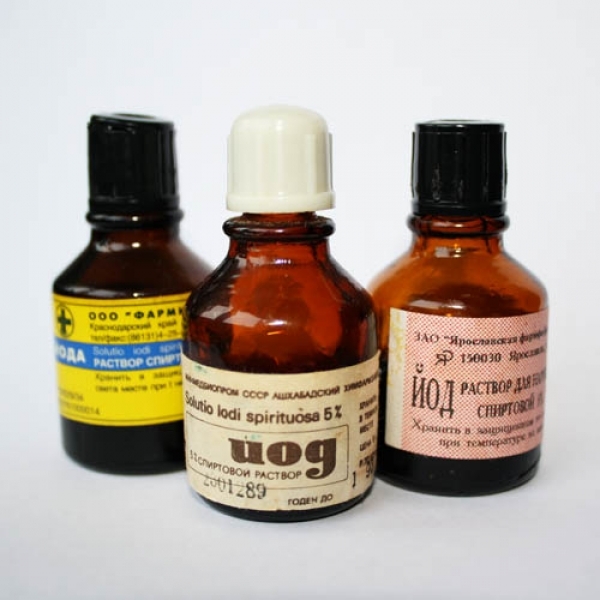Tincture of Iodine, iodine tincture, or a dilute iodine solution is a brownish colour solution which is used as an antiseptic.
It is commonly 2 to 7 percent elemental iodine, potassium iodide, or sometimes sodium iodide dissolved in ethanol and water. Here, potassium iodide/sodium iodide is solute and ethanol is solvent. The presence of alcohol distinguishes tincture solutions.

Index
History
The solution was first utilized in pre-operative skin preparation by surgeon Antonio Grossich in 1908.
Lionel Stretton was a pioneer in the creation of an iodine solution for skin sterilizing in the United Kingdom. In 1909, the British Medical Journal published an account of his work at Kidderminster Infirmary.
Application of Tincture of Iodine
- The solution is a nonprescription medication used to treat mild bacterial skin infections and sterilize wounds.
- As a disinfectant, small quantities of this solution can be applied to suspicious drinking water (typically 5 mg free iodine per liter, or 5 drops of 2 percent tincture). This medication is not effective against protozoan parasites like Cryptosporidium and Giardia.
- It is also used to sanitize surfaces, fruits and vegetables.
- When tincture of Iodine is applied to the skin, only a small portion of the iodine is absorbed and available. In the case of a nuclear disaster, this method can be used to iodine-saturate the thyroid in order to prevent excessive absorption of radioactive iodine-131 isotope.
FAQS
Betadine is a formulation that contains povidone, HI (hydrogen iodide), and elemental iodine (I), whereas iodine is a chemical element.
Because of the reactivity of Iodine, I2 reacts to the sun rays and forms an iodine-free radical by homolytic bond fission.
Iodine is non-polar, whereas water is polar. Polar substances dissolve with polar substances, whereas non-polar substances dissolve with non-polar substances.
In this situation, Ethanol is both polar and non-polar, yet in order for a solute to dissolve in a solvent, it must have equal inter-molecular attraction, which water does not have.
